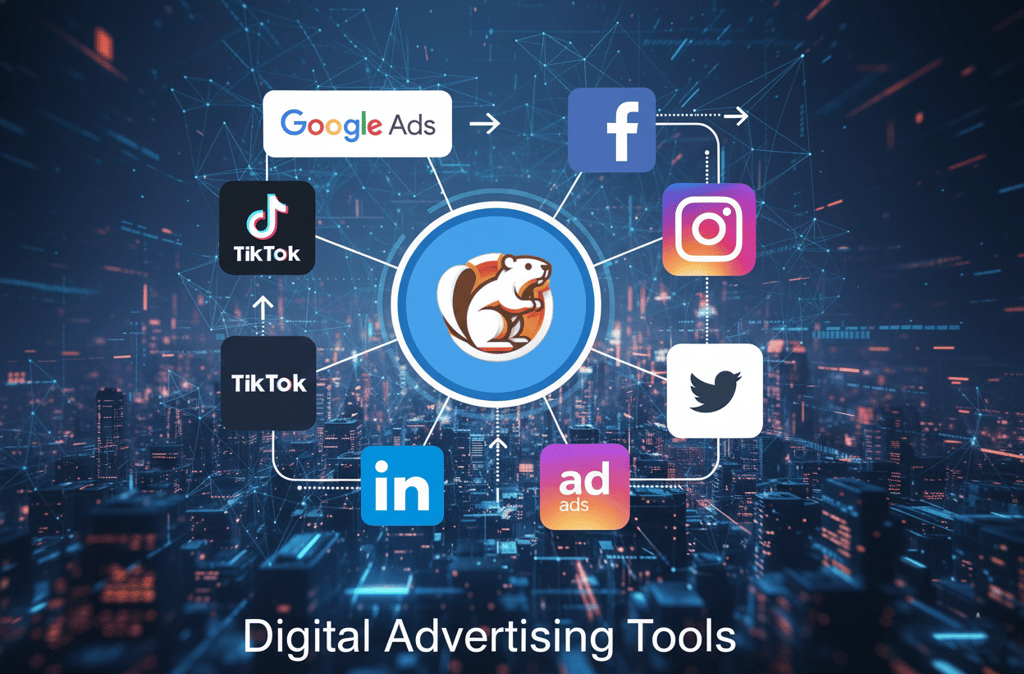Latest Digital Marketing Strategies & Tools You Need in 2025
Amin Shahi
10/20/20254 min read


1. Big Trends That Should Shape Your Strategy
✨ AI/Automation as the baseline
AI is no longer optional. According to recent overviews, AI‑powered marketing tools are used by the majority of marketers and deliver measurable gains. Digital Monk Marketing+1
Use AI to optimise ad spend, automate creative testing, segment audiences and even generate content.
Evolve from “manual campaign setups” to “AI‑driven campaign loops” where human monitors, AI executes.
Privacy‑first & cookieless tracking are increasingly important choose tools and strategies that respect first‑party data and transparency.
🎯 Integrated, cross‑channel campaigns
Gone are the days of isolated SEO, email, social‑ads silos. The winning approach now: an orchestrated funnel across search, social, ads, email, landing pages, and conversion metrics.
Ensure your campaigns align: your ad creative, landing page message, and follow‑up email must speak the same language.
Use analytics not just to report but to connect the dots: where did the lead come from? Which offer converted? What’s cost per acquisition?
📈 Content that works for both people & machines
Search engines and AI‑driven discovery (via assistants, chatbots, etc.) are playing an increasing role. Optimize your content with both in mind.
Use structured headings, clear messaging and relevant keywords.
Include visuals, infographics and interactive media they boost shareability and dwell time.
Keep up with evolving search behaviour (voice search, visual search, intent‑based queries).
“AI is expected to become even more integral … hyper‑targeted campaigns … voice and visual search optimization.” Reddit
2. Top Digital Marketing Tools (and how to use them)
Here’s a curated list of tools you should seriously consider each covers a different part of your marketing stack.
✅ SEO & Analytics
SEMrush: A full‑fledged SEO/competitive‑analysis suite. Keyword research, backlink audits, site‑health checks. Mapleweb Ca+1
Ahrefs: Especially strong on backlink data, content‑opportunity research and trend watching. techblits.com
Google Analytics 4 (GA4): The de facto standard for tracking user behaviour across devices and platforms. LinkedIn+1
✅ Creative & Visual Content
Canva: Enables fast, professional visuals social posts, ad creatives, banners no designer needed. theoflow.com+1
Figma or similar: great for collaborative design workflows when your team grows or you need more flexibility. The Verge
✅ Email, Automation & Campaign Management
HubSpot: All‑in‑one CRM + marketing automation + workflows. Great for inbound, lead nurture, full‑funnel campaigns. techblits.com
Mailchimp: For email‑centric efforts, especially smaller to mid‑sized operations. Automated journeys, segmentation, analytics. Mapleweb Ca+1
✅ Ad Campaigns & Multi‑Channel Advertising
Advyro: A tool you should know designed to simplify advertising across channels, especially useful for businesses looking to streamline ad setup, targeting and optimisation.
Use‑case: Launch a campaign in minutes, track multiple channels, optimise based on data, reduce overhead.
Benefit: Helps bridge the gap between “we have ads running” and “we optimise efficiently & scale”.
Also: Don’t forget the big ad platforms themselves (Google Ads, Meta Ads Manager) you’ll still need them; tools like Advyro + analytics make them more efficient.
3. Practical Tips You Can Use Right Now
Audit your current stack: What tools are you using? Are they connected? Is data flowing from one to another (ads → landing page → CRM → analytics)?
Set measurable goals: Define Key Performance Indicators (KPIs) — e.g., cost per acquisition (CPA), conversion rate, return on ad spend (ROAS), engagement rate. Then use the tools above to monitor.
Use A/B or multivariate testing: Especially on ad creative, landing pages and email subject lines. Your tools (e.g., GA4, HubSpot) should help you test and report.
Automate what’s repetitive: If you’re manually uploading creatives to multiple channels, manually pulling reports, or manually building email segments you’re wasting time. Use automation from your stack.
Create high‑value content: Blog posts, videos, infographics aim for content that solves a problem, answers questions and is shareable. Then optimise it for search and AI discovery.
Stay privacy‑conscious: With evolving regulations and changes (third‑party cookie phase‑out, etc.), rely more on first‑party data, transparent tracking, and tools that support privacy‑friendly workflows.
Keep an eye on emerging formats: Video, short‑form, interactive content, voice/visual search – these are becoming mainstream, so your tool‑stack and content strategy must adapt.
4. How to Use This on Your Website or Blog
Choose one major pain‑point your audience has (e.g., “Why my ads cost too much” or “Why my leads aren’t converting”).
Write a blog post or guide around that pain‑point, share actionable tips, then embed tool‑recommendations (including tools above) to show them how to fix it.
Use keyword‑rich headings (H2, H3) and include internal links: e.g., to other posts like “Email automation checklist” or “Landing page optimisation”.
Include visuals (screenshots, diagrams) social‑friendly and shareable.
End with a strong call‑to‑action (CTA): “Download our checklist”, “Book a free review of your ad setup”, or “Start a 14‑day trial of X”.
Ensure your post is SEO‑optimised: meta‑description, alt‑text for images, readable URL, mobile‑friendly layout and fast load time.
5. Quick Check‑List Before You Hit Publish
Does the title include a keyword your audience searches for?
Are relevant sub‑headings clear and layered (H2, H3)?
Are at least 2‑3 of the tools above mentioned (and linked) in context?
Is the post sharing actionable tips, not just theory?
Do you have one or more images or graphics (with alt‑text) to break up text?
Do you have a CTA at the end to drive next‑step behaviour?
Have you internally linked to other relevant blog posts/pages?
Is the page loading fast and mobile‑optimised?
Are you tracking performance (page views, bounce rate, conversion) so you can iterate?
📌 Final Thoughts
Digital marketing isn’t about using all tools it’s about using the right ones in the right way. The real edge comes from the intersection of:
Clear strategy +
Smart tool selection (analytics, SEO, content, ads, automation) +
Consistent execution and optimisation.
Use tools like SEMrush, Ahrefs, Canva, HubSpot, Mailchimp and yes, consider Advyro for simplifying ad campaigns but avoid over‑complicating your stack. Choose what aligns with your goals, budget and team. Then monitor, iterate and scale.
Ready to roll? Pick one tool you’re not using yet from above, integrate it this week, and measure the lift. Small wins build momentum.
Efficiency
Streamline your advertising with our innovative app.
Innovation
Success
info@advyro.com
+1 343 633 1881
© 2025. All rights reserved. Visit our Terms and conditions and Privacy policies Pages
Terms and conditions
Privacy policies
